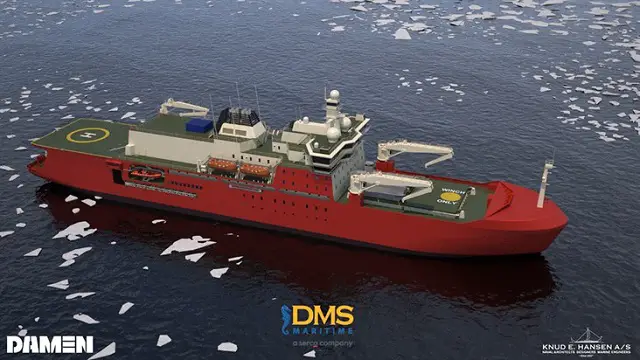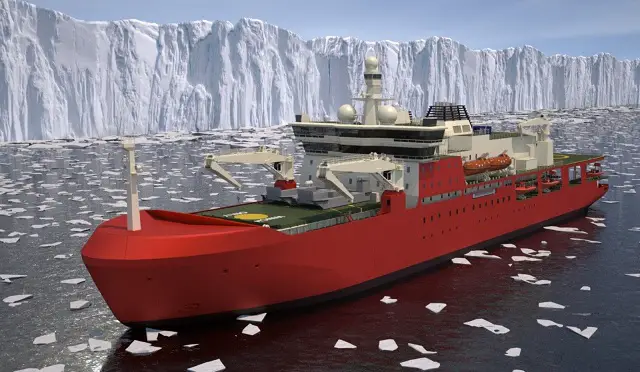Breaking news
First steel cut for Australian Antarctic Supply Research Vessel.
| 2017
|
|
|||
 The 160-metre ASRV will perform numerous tasks for the Australian Antarctic Division (AAD). The 160-metre ASRV will perform numerous tasks for the Australian Antarctic Division (AAD). |
|||
|
Research potential
In addition to supplying Australia’s three permanent research stations on the Antarctic continent as well as its research station on the sub-Antarctic Macquarie Island with cargo, equipment and personnel, the ASRV will be able to carry out comprehensive scientific research activities. To this end, the vessel will be equipped with a 500 m2 on-board laboratory that will serve as workspace for up to 116 AAD scientific staff. In terms of research possibilities, the ASRV will serve as a valuable asset towards the advance of scientific knowledge and understanding of the Southern Ocean. The vessel will feature a 13-metre deep wide moon-pool for deployment of conductivity, temperature,acoustic and depth measurements. The ASRV design also incorporates a ‘wet well’ sampling space, a scientifically pioneering installation that consists of a watertight room below the water line that can be used for biological sampling. Further activities such as seismic mapping, AUV operation and net deployment can be performed on the sizeable aft deck. Future proof science A key part of the vessel design lies in the fact that the ASRV is expected to be in service – and therefore to continue to perform cutting edge research – for 30 years. “What this means is that we went for a more modularised approach to the science spaces with a preference for containerised laboratory spaces rather than fixed labs. This allows us to adapt the ship for the science questions that need to be answered in the future,” states Mr Bryson. Serco Australia Chief Executive Officer Mark Irwin said, “Serco has again been able to provide the skills and support required to enable the continued development of this exciting and unique vessel delivery project, and will continue to work closely with our customer, the AAD, and our design and build partner, Damen, to progress to final delivery in 2020. Congratulations to the project team for meeting this significant milestone and as we now start to turn our attentions to the build stage we should look forward to further successes in the very near future.” Construction and outfitting of the vessel will be carried out at Damen Shipyards Galati, with engineering and project management being provided by Damen Schelde Naval Shipbuilding in the Netherlands. |
|||



























